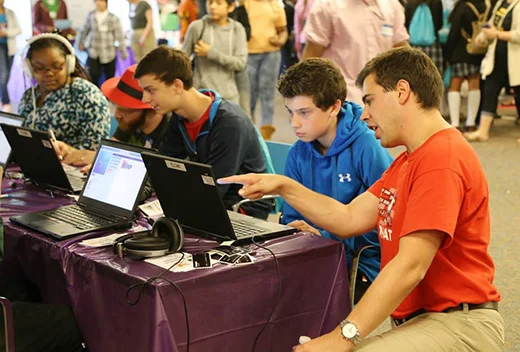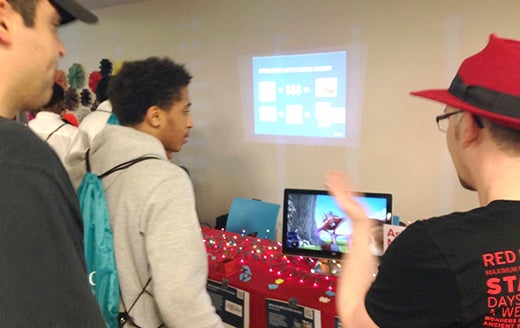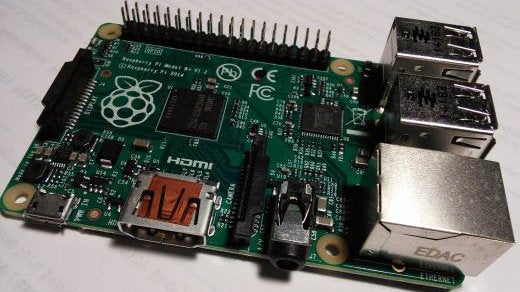At the end of last month, I had the unique opportunity to participate with a few of my work colleagues on the US2020 RTP STEM EXPO. About 500 students from North Carolina interested in science, technology, engineering, and mathematics (STEM) showed up to the event. My colleagues and I gathered around a couple of tables and chatted with students, teachers, administrators, and parents about open source, open hardware, and programming.
One table had 6 laptops running Red Hat Enterprise Linux and Firefox setup as kiosks for the kids to do some programming with Scratch. They were given a challenge, and if they could write the code to do it they would get a prize.

Photo by Giovanni Sanchez CC-BY-4.0
On the other table, we had a few things set up as display to try to catch the kids' attention to our area. We had an overhead projector rolling through a presentation about open source, a screen showing the short animated film Big Buck Bunny, which was created entirely with open source technologies. We also had several little toys and gadgets made with a 3D printer and my very own Raspberry Pi controlling 500 lights blinking in sync with a few songs I hand picked for the event. The setup for the lights was the one I used to write Create your own musical light show with Raspberry Pi.

Photo by Giovanni Sanchez CC-BY-4.0
Throughout the day, one thing became clear to me: most of those kids really wanted to grow up to be someone working in the technology field. I had several kids ask me for advice on how to get started in the fields of programming, system administration, and contributing to open source projects. And that's where the idea for this article was born.
It was surprising to see how many kids that went by our tables had been exposed to some sort of technology beyond game playing or social media. Quite a few of them had even already used Scratch at school, yet not many of them have had the opportunity to install an operating system before. When I stopped to think about it, my personal conclusion was that parents are not willing to gamble with the stability of their home computers for their kids to tinker at that level. I have three kids, two of them teenagers, and I myself wouldn't be comfortable letting my 15 year old "try" to install Linux on his laptop. I mean, he uses it for school papers and math homework. If he messes it up, I would rather not have to be technical support. It's expensive, not only as a time investment, but also financially.
That's where the Raspberry Pi comes in. It's a $35, fully functioning computer that kids can plug into a TV and mess with without the risk of "destroying" the family computer. They can follow instructions on the Internet for how to install NOOBS, Raspbian, or Pidora on a MicroSD card, plug it into the Pi and "tinker" with Linux.
So, my advice to a lot of those kids was to take their birthday or Christmas money, buy a Raspberry Pi, and search the Internet for how-tos and get started guides. Once they've got it up and running, they should look up some Linux how-tos, learn basic shell commands, and figure out how to install and remove packages. Once they've understood a little bit of that, they should pick a programming language (Scratch, Javascript, Logo, Python, Php, Ruby, Perl) and do some "Hello World" applications. And finally, I would tell them to find something they are passionate about, because most likely there will be one or more open source projects around the world that relate to it.
Part of the goal here for these kids is that eventually they will be able to start giving back to the open source community by reporting and fixing bugs, helping with documentation and marketing, or even doing translations of open source. That's how I started, at least.
At the end of the event, all of us were patting each other on the back, calling our booth a great success for the kids, and already talking about doing it again next year.
I can't wait.
Thanks to Giovanni Sanchez for contributing to this article.
Hardware
Connection
This article is part of the Open Hardware Connection column coordinated by Rikki Endsley. Share your stories about the growing open hardware community and the fantastic projects coming from makers and tinkers around the world by contacting us at open@opensource.com.







6 Comments